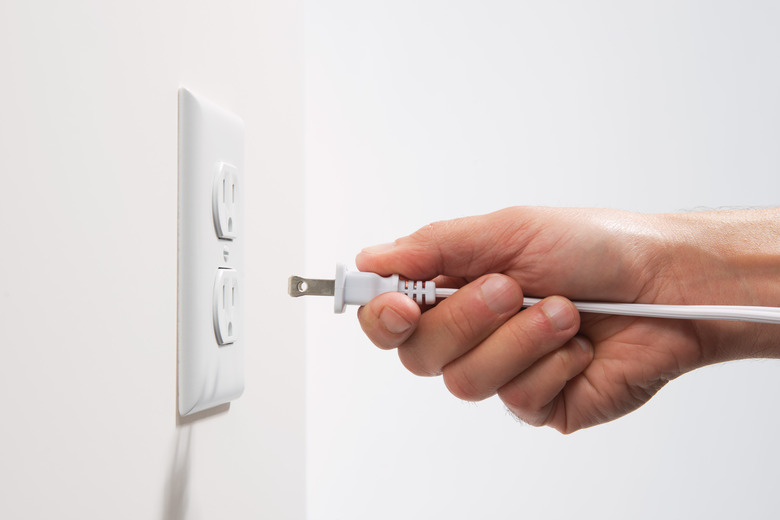The Advantages And Disadvantages Of AC And DC
We may receive a commission on purchases made from links.
Say the word "electricity," and many Americans think of Thomas Edison, but the name Nikola Tesla should also come to mind. Along with financier George Westinghouse, Tesla is responsible for the fact that AC electricity powers every home in North America, as well as almost every home in the rest of the world that has electricity.
Alternating current (AC) is easier to produce than direct current (DC), thanks to the induction generator invented by Tesla. Another of the benefits of AC current is that it's easier to transmit. DC electricity is easier to store, however, and it's better for small applications involving delicate electronics and thin wire. All small devices powered by batteries run on DC current.
AC vs. DC
AC vs. DC
In the 1880s, Edison and Tesla became embroiled in a battle to establish the type of current that would best serve the electricity needs of the United States. Historians remember this battle as the War of the Currents. Edison established a network of DC electricity capable of powering lights and other electrical devices, but there was a problem. Because no method was known to increase the voltage, power stations were needed at intervals of only a few miles.
Using transformers, AC power can be stepped up to very high voltages and then stepped down to a useful voltage at the point of use, eliminating the need for intervening power stations. Edison believed the high voltage in AC transmission lines was dangerous, even going as far as to electrocute stray animals in public to prove his point. The matter was settled when George Westinghouse employed the induction generator to power the new generating station at Niagara Falls. Not only was AC power safe, it lit up the entire city of Buffalo, New York — and beyond — as soon as the Niagara Falls power station came online in 1896.
DC Rules in Electronics
DC Rules in Electronics
Any small device that relies on a battery uses DC current, and the flow of electrons from one terminal to the other through a circuit is how most high school students understand current flow. Unlike AC current, which changes direction many times (typically 50 to 60) per second, DC current flows reliably in the same direction. That's important in the world of semiconductors, LEDs and transistors. Each time AC current switches direction, there's a momentary loss of power. The moment is infinitesimal, but it's enough to affect the sensitive devices that have become common in the modern computerized world.
What About DC Power Transmission?
What About DC Power Transmission?
Both AC and DC current can be transmitted through power lines, but in the absence of a step-up transformer, AC power transmission is less efficient. AC electricity tends to travel on the surface of the wire and loses power over distance due to the Skin Effect and capacitive coupling, whereas DC electricity travels through the whole wire.
Since the days of Tesla and Edison, engineers have developed ways to increase the voltage of DC power with transformers. Because large-scale solar electricity farms and other renewable power sources generate DC power, transmitting it as DC current would eliminate the need for conversion by inverters, which waste power through heat loss.
